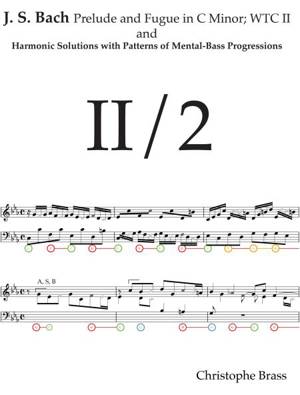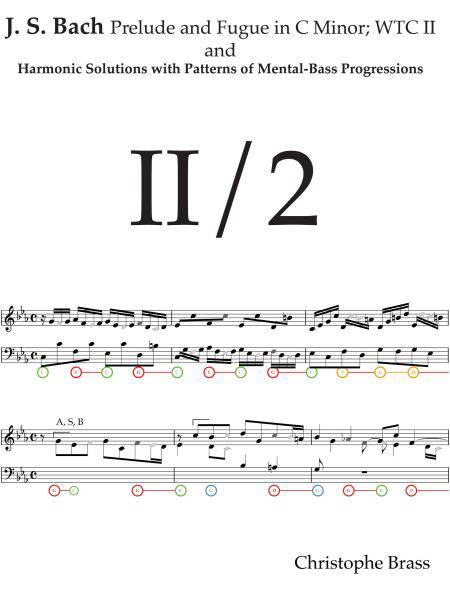
- Retrait gratuit dans votre magasin Club
- 7.000.000 titres dans notre catalogue
- Payer en toute sécurité
- Toujours un magasin près de chez vous
- Retrait gratuit dans votre magasin Club
- 7.000.0000 titres dans notre catalogue
- Payer en toute sécurité
- Toujours un magasin près de chez vous
J. S. Bach, Prelude and Fugue in C Minor; WTC II and Harmonic Solutions with Patterns of Mental-Bass Progressions EBOOK
Christophe BrassDescription
In my edition of the "Prelude and Fugue in C Major; harmonic solutions with patterns of mental bass progressions", I introduced my harmonic solutions for the pieces in the Well-Tempered Clavier, and explained something about my methods. I will not repeat this introduction here, as study of the first Prelude and Fugue will build an excellent foundation, which I believe is necessary in order to continue with others in the collection. Instead, this preface lists the main consequences that are necessarily drawn from my understanding of Bach's harmonic principles, principles which are clearly illustrated graphically within each of my scores for the Well Tempered Clavier.
— In my opinion, to simply play notes and intervals without any awareness of each note's harmonic identity does not reflect Bach's intent or practice in the WTC. This harmonic identity means that every note in a composition or a performance (which is usually the same thing in Bach) is not just thought of by its melodic function, but is also considered in how it relates to a mental bass. When a note is considered with its mental bass, it can function as a fundamental note, a harmonic third, a harmonic fifth, a harmonic seventh, a harmonic ninth or as a non-chord note. This mental bass is in turn always considered in how it relates to the tonic or a tonic substitute, and will be used in some pattern that moves naturally around this tonic or tonic substitute.
— Therefore, any conception that a piece from the WTC consists of several "independent" voices does not reflect Bach's compositional process. In fact, the voices of the polyphony are more or less dependent upon these carefully organized mental bass patterns (I have found some passages in Bach's organ music which would have been composed without any underlying mental bass, but am yet to discover any such places in the Well Tempered Clavier).
In many cases, one or more voices are strongly dependent upon the current mental bass progression, with Bach deducing the shape of these voices from the dynamic properties of given harmonic patterns. This can be understood by playing with an awareness of the harmonic identity, instead of merely reproducing the pitches and intervals on the score, which will only grant glimpses of the music's logic and sense.
— Memorizing every voice of any of the preludes or fugues without this awareness of the underlying logical harmonic progressions created by mental basses is a purely theoretical exercise, and bears no relation to Bach's practice.
— It is important to remember that in Bach's music, there is only one tonic! For this reason, the tonic substitutes in a piece are always drawn from the tonic's scale (excluding the leading tone), and a mental bass that is a tonic substitute is mostly the goal of a harmonic progression within the piece. This may seem a small point, but I believe it is important if we are to correctly understand Bach's music as being truly tonal, and I insist on this point in the quick reference card at the entry for tonic substitute.
— Once one has studied any prelude and fugue from the WTC with an awareness of each note's harmonic identity, then the score is no longer necessary for performance or for understanding. The piece will become more and more obvious (even the most complex works of the WTC will become more accessible over time), and can then be played by heart as well as if one had composed them, rather than as some passive contemplation of a mysterious masterpiece, opaque to nearly all minds.
Spécifications
Parties prenantes
- Auteur(s) :
- Editeur:
Contenu
- Langue:
- Anglais
Caractéristiques
- EAN:
- 9781005717551
- Date de parution :
- 10-09-21
- Format:
- Ebook
- Protection digitale:
- /
- Format numérique:
- ePub

Les avis
Nous publions uniquement les avis qui respectent les conditions requises. Consultez nos conditions pour les avis.






